You can contact LEARNZ, part of CORE Education, at:
Postal Address:
PO Box 13 678,
Christchurch 8141,
New Zealand
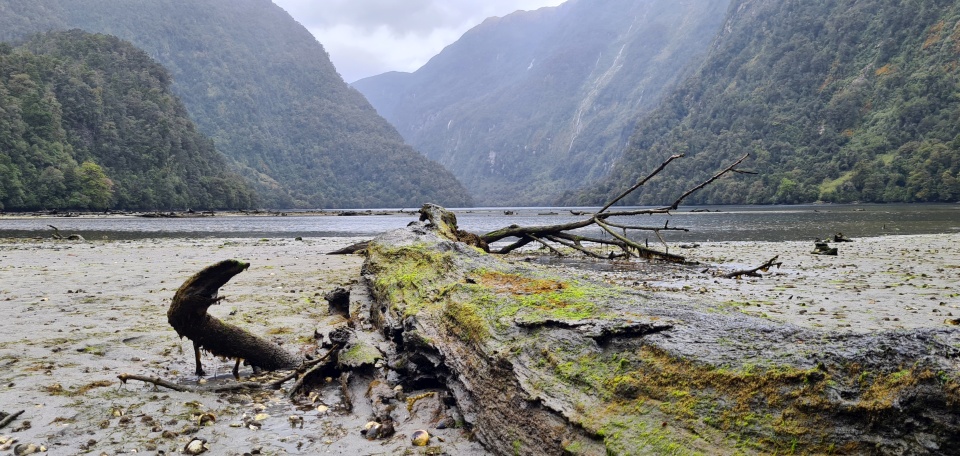
Remote and rugged, the 15 fiords in the south-west of Aotearoa New Zealand are unique. The area includes two very different but interconnected ecosystems, above and below the surface of the water. Nutrients flow between these ecosystems so a healthy forest relies on a healthy ocean and vice versa.
A fiord is a long, narrow inlet of sea, with steep sides carved out by a glacier. New Zealand has 15 fiords. The Fiords contain both sea water and freshwater. The freshwater is less dense than sea water, so it floats above the saltwater.
Freshwater flows from the land into the fiords. Fiordland is one of the wettest places in Aotearoa, recording over 7.5 metres of rainfall each year. With all this rain a huge volume of freshwater flows into the fiords.
Forests feed the fiords. As the water runs down banks through forests and leaf litter it becomes brown. This brown layer of fresh water stops some sunlight from reaching the saltwater below. This makes the saltwater dark. It is this reduced level of light that makes the fiord waters so special.
Most creatures in the fiords live on the underwater rock walls. The top layer of fresh water is home to only a few hardy creatures such as mussels, shrimps and barnacles. These animals can cope with the brackish water. Just below this layer, deep-water animals can live in much shallower water. These animals are carried on currents from Te Tai o Rehua the Tasman Sea into the dark sheltered waters of the fiords. Here, conditions are similar to those of the deep ocean and the rock walls are covered in huge numbers of sponges, corals, sea stars, sea urchins, lace corals and sea squirts.
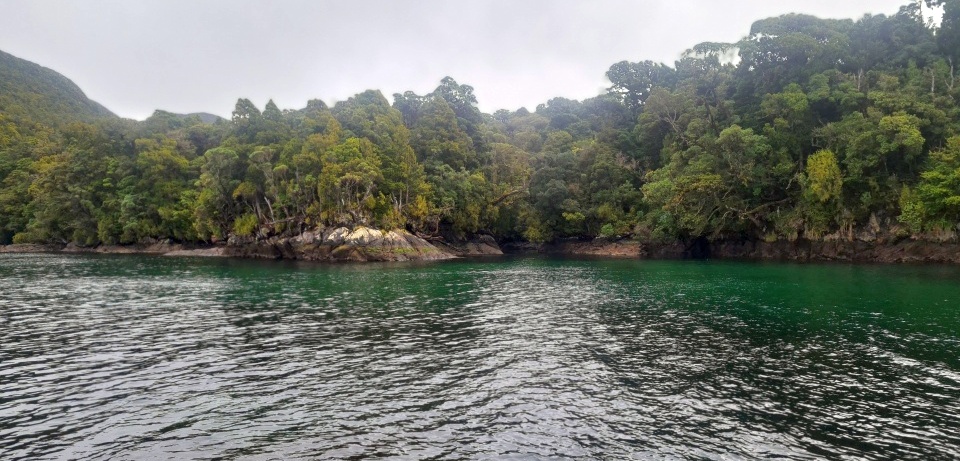
While alive, black corals are actually white. Most black corals are deep-sea species, but in the dark waters of Fiordland, black coral grows at depths of only 15 to 50 metres. Fiordland’s colonies of black coral carry some brittle stars. Scientists think they help to keep the coral free of smothering sediments.
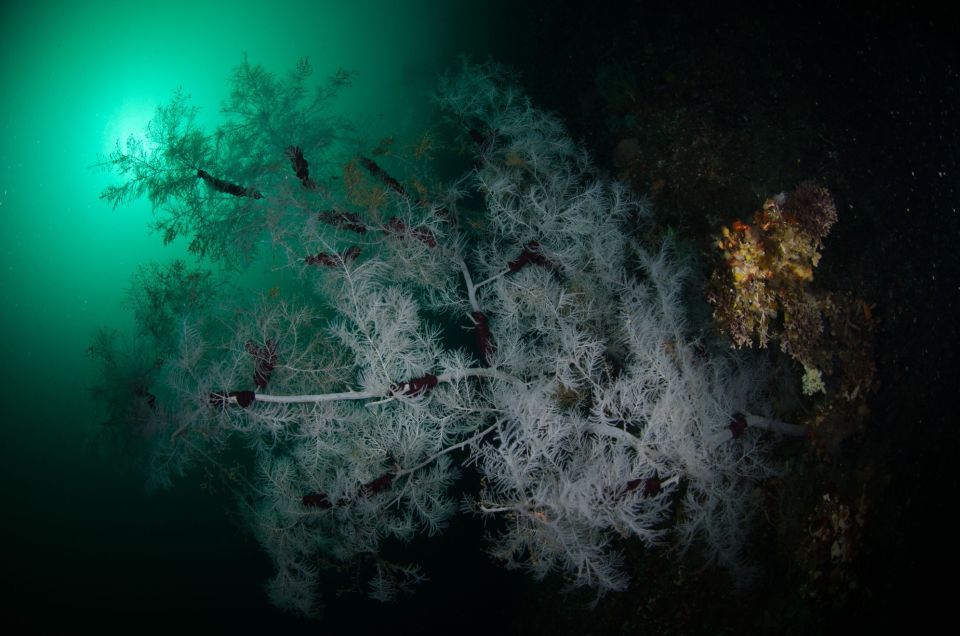
Further down, sea cucumbers and glass sponges make their homes.
Not much lives in the dark basins more than 40 metres deep. Heart urchins, tube worms and crabs are among the animals that live on the muddy floors of the fiords.
Over 150 types of fish live in the fiords. The blue cod and butterfly perch are so tame that they swim up to divers. Fur seals also venture into the fiords to live.
Further out towards the open ocean there is more mixing of water and better light, so more kelp grows. Here koura rock lobster teem and pāua graze the rocks. Terehu bottlenose dolphins, kekeno New Zealand fur seals, tawaki Fiordland crested penguins, and kororā blue penguins are common. You may even see whales, which swim by where the continental shelf comes close to the coast.
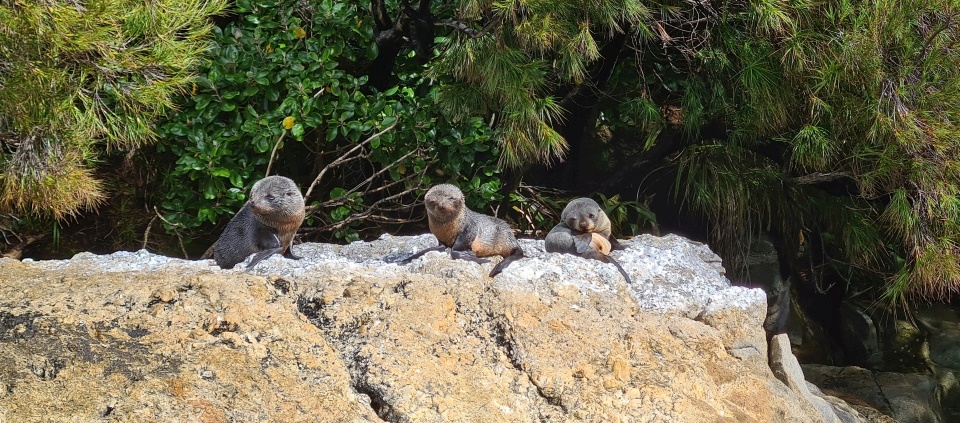
Fiordland’s marine reserves offer spectacular opportunities to experience the area’s unique underwater ecosystems. These reserves are representative of the diversity of marine environments found in Fiordland. These protected areas are an important tool for ensuring our marine biodiversity is maintained in a healthy state.
All New Zealand’s marine reserves are managed by Te Papa Atawhai the Department of Conservation. The following rules apply to activities in a marine reserve:

Fiordland has a variety of habitats and is isolated by steep mountains. This has led to high numbers of endemic plants.
Much of Fiordland is heavily forested. Beech trees are common, silver beech in the fiords and red beech in the inland valleys.
In the understory there are a wide variety of shrubs and ferns. Above the tree line there are areas of scrubby herbs, patches of bog next to mountain streams and finally an area of rimu-dominated sand dunes in the Waitutu area on the south coast. Cool summers and exposure to the coast means that the treeline is lower than some other parts of Aotearoa (below 1,000 metres in altitude).
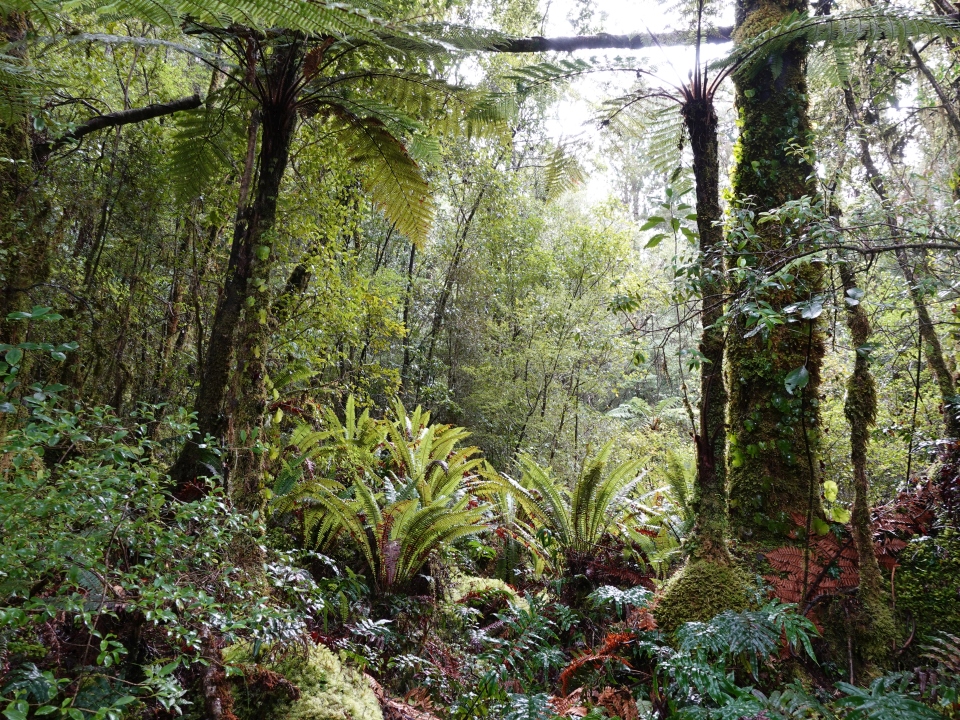
Fiordland is home to threatened native bird species, such as:
You may also see kea and kākā soaring overhead and might spot tomtits, tūī, kakaruwai South Island robin and hihi stitchbirds.
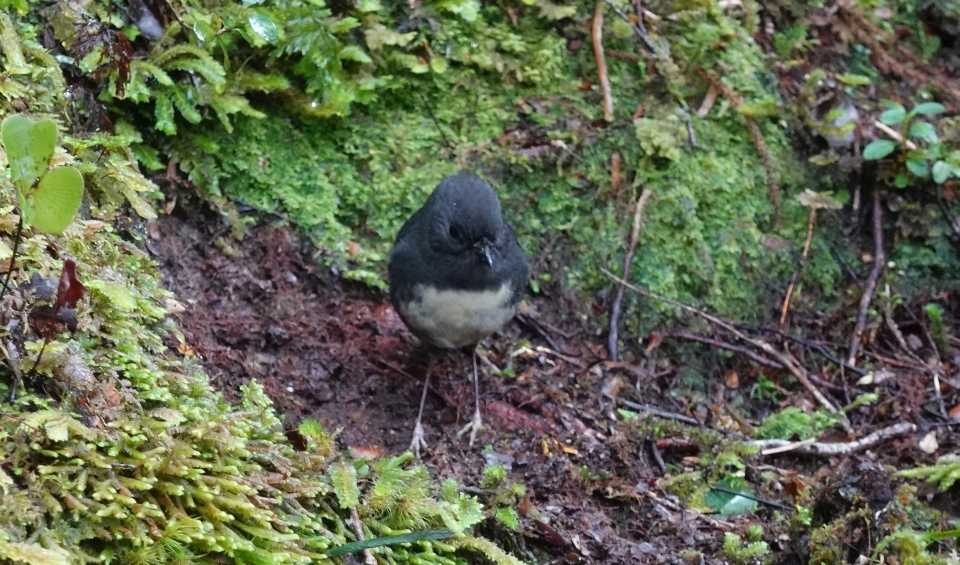
Threatened peka-peka-tou-roa long tailed wattled bat and Sinbad Skinks also live in parts of Fiordland.
There are huge numbers of insects, with over 300 species found only in the Fiordland region. Some of these are large, such as wētā, large caddis, and giant weevils, and some of them unusual, such as egg-laying worms, alpine cicadas, and brightly coloured alpine moths.
Fiordland is also home to many hungry sandflies! There are six species of native sandflies and one of these is only found in Fiordland.
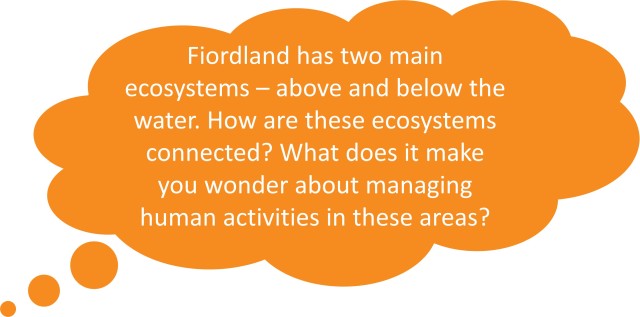
Try the Fiordland above and below the water quiz.
Watch the Mirror World Documentary. This film explores the symmetries of life above and below the fiords.